Research - Zorrilla Lab
Overview. The Zorrilla laboratory seeks to understand the neural substrates of motivated behavior and of the regulatory control of energy balance using interdisciplinary techniques that span molecular, biochemical, neuroanatomical, pharmacological, physiological, behavioral and statistical methods. We are particularly interested in genetic, epigenetic and neuroadaptive differences in the neurobiology of reward and stress circuits that subserve the control of food intake as well as other appetitive (reward-driven) and stress-related behaviors. Our work is therapeutically relevant to the increased incidence of obesity, binge eating disorders, alcoholism and drug addiction, and stress-related psychiatric disorders of anxiety and depression in industrialized societies.
Food Intake and Obesity. The overarching hypothesis of our feeding-related research is that non-nutritional motivational influences, integrated in extrahypothalamic brain reward and brain stress pathways, and energy homeostasis signals, integrated in the hypothalamus and caudal hindbrain, interactively control ingestive behavior and, by association, body weight and adiposity.
Extrahypothalamic control of compulsive eating. In one research thrust, we study the hedonic control of compulsive food intake using diet-cycling models of binge eating on palatable food. In our models, withdrawal from intermittent access to high-sucrose food increases anxiety-like behavior, reduces how much rats will “work” to obtain otherwise acceptable food, promotes binge-like intake of palatable food, increases weight gain and body fat, and elevates levels of adipokines associated with metabolic syndrome.  One objective of this project is to identify addiction-like neuroadaptation of stress- and reward-regulatory neurocircuitry that results from cyclic binge-like intake (see review). A second objective is to evaluate the therapeutic potential of drug-like small molecules to normalize food intake, emotional behavior and weight gain (see link). Efforts to date have focused on opioidergic, corticotropin-releasing factor (CRF) and endocannabinoid systems. The endocannabinoid system project includes a collaboration with Jenrin Discovery to study the therapeutic potential of non-brain penetrant CB1 receptor antagonists (i.e., peripherally-restricted) that avoid the unintended, CNS-mediated adverse psychiatric side effects associated with clinically-withdrawn rimonabant. The aim of this collective work is to understand the biological substrates of compulsive food intake so as to better treat diet-induced obesity; eating disorders, such as bulimia and binge eating disorder; and other forms of “food addiction.”
One objective of this project is to identify addiction-like neuroadaptation of stress- and reward-regulatory neurocircuitry that results from cyclic binge-like intake (see review). A second objective is to evaluate the therapeutic potential of drug-like small molecules to normalize food intake, emotional behavior and weight gain (see link). Efforts to date have focused on opioidergic, corticotropin-releasing factor (CRF) and endocannabinoid systems. The endocannabinoid system project includes a collaboration with Jenrin Discovery to study the therapeutic potential of non-brain penetrant CB1 receptor antagonists (i.e., peripherally-restricted) that avoid the unintended, CNS-mediated adverse psychiatric side effects associated with clinically-withdrawn rimonabant. The aim of this collective work is to understand the biological substrates of compulsive food intake so as to better treat diet-induced obesity; eating disorders, such as bulimia and binge eating disorder; and other forms of “food addiction.”
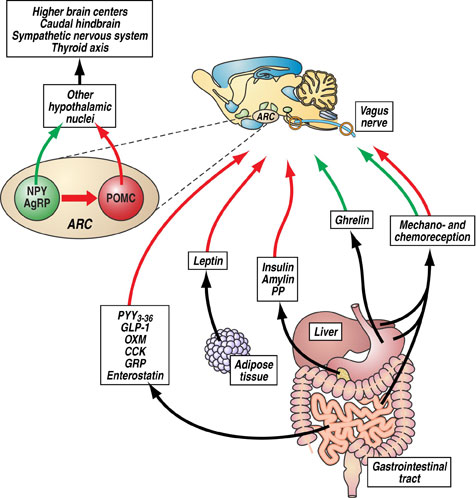
Regulatory control of energy homeostasis. We also study endogenous molecules implicated in energy homeostasis to help combat obesity. A particular therapeutic interest is in feedback signals of energy shortage (famine) that may impede the attainment and maintenance of weight loss in obese individuals. 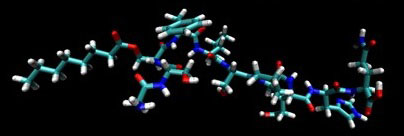 For example, one candidate “famine response” molecule is ghrelin, a 28-residue stomach hormone that increase hunger, food intake, and metabolic thrift. In a series of collaborations with Kim Janda (TSRI-La Jolla), we showed that active immunization against the N-terminal end of ghrelin reduces the rate of weight gain and fat accumulation in rodents, with reduced food intake also seen in mice (see link). We also found that acute administration of a catalytic antibody that facilitates degradation of ghrelin to its inactive des-acyl form increased energy expenditure in fasting mice and blunted refeeding after fasting (see link). As a further passive immunization approach, we compared the efficacy of C- and N-terminally directed monoclonal antibodies delivered singly or in various “cocktail” combinations to attain short-term changes in food intake or energy expenditure of fasted mice. We found that oligoclonal cocktails that included both N- and C-terminally directed antibodies reduced food intake and blunted fasting-induced decreases in energy expenditure. The results suggest it may be necessary to target the ghrelin peptide at more than one epitope (see link). The collective findings support the feasibility of immunoneutralizing ghrelin, and potentially other energy insufficiency feedback signals, as a way to facilitate weight loss.
For example, one candidate “famine response” molecule is ghrelin, a 28-residue stomach hormone that increase hunger, food intake, and metabolic thrift. In a series of collaborations with Kim Janda (TSRI-La Jolla), we showed that active immunization against the N-terminal end of ghrelin reduces the rate of weight gain and fat accumulation in rodents, with reduced food intake also seen in mice (see link). We also found that acute administration of a catalytic antibody that facilitates degradation of ghrelin to its inactive des-acyl form increased energy expenditure in fasting mice and blunted refeeding after fasting (see link). As a further passive immunization approach, we compared the efficacy of C- and N-terminally directed monoclonal antibodies delivered singly or in various “cocktail” combinations to attain short-term changes in food intake or energy expenditure of fasted mice. We found that oligoclonal cocktails that included both N- and C-terminally directed antibodies reduced food intake and blunted fasting-induced decreases in energy expenditure. The results suggest it may be necessary to target the ghrelin peptide at more than one epitope (see link). The collective findings support the feasibility of immunoneutralizing ghrelin, and potentially other energy insufficiency feedback signals, as a way to facilitate weight loss.

Another line of research involves type 2 urocortins, endogenous peptide agonists for the CRF2 receptor (see review). We have shown that intra-hypothalamic administration of type 2 urocortins substantially reduces intake of palatable food, with evidence implicating the ventromedial hypothalamus and a region in the vicinity of the paraventricular nucleus of the hypothalamus in appetite suppression. Central administration of type 2 urocortins also increased whole-body energy expenditure and increased relative utilization of fat as a fuel substrate. We further showed that systemic administration of type 2 urocortins also reduces food intake. Importantly, type 2 urocortins reduce food intake without producing stress- or malaise-like effects, unlike CRF1 agonists. Finally, we showed that obesity-prone and obesity-vulnerable rats show different sensitivity to the anorectic effects of urocortin 2 and that mice lacking CRF2 receptors eat less than wildtype mice during the nocturnal peak of feeding, findings that support the physiologic significance of the urocortin-CRF2 system for the control of appetite. The results collectively implicate urocortin-CRF2 systems for further study as potential therapeutic targets for obesity and its metabolic complications.
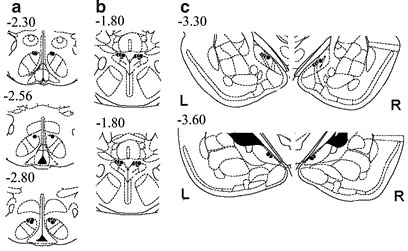
Discovery of novel targets. We seek to identify novel molecules that moderate obesity risk. For example, with Bruno Conti (TSRI-La Jolla) we showed that interleukin-18 (IL-18) modulates food intake, metabolism, and adiposity during adulthood and may be a pharmacological target for controlling energy homeostasis (see link). Both central and peripheral injection of this cytokine suppresses appetite, feed efficiency, and weight regain in fasted mice, without promoting sickness-like behavior. Supporting a physiologic role for this molecule in energy homeostasis, mice that lack IL-18 overeat, show increased feed efficiency and reduced metabolic rate in young adulthood and become overweight and 2- to 3-fold fatter than normal mice by mid-adulthood. Ongoing research will seek to determine molecular mechanisms of action, neuroanatomical sites of action via a promoter-restricted Cre/lox mouse approach, and the activity of IL-18 in obesity models.
As part of our discovery efforts, we utilize functional genomic techniques. For example, we performed Affymetrix whole genome microarray analysis of lateral hypothalami from rats that were genetically vulnerable or resistant to diet-induced obesity as well as from offspring whose mothers were chronically fed an energy-dense “Western” diet (vs. regular chow food) throughout pregnancy and lactation. We identified several mRNA transcripts that were differentially expressed in both models, and biologically validated some via transcript-specific qPCR. We are actively working on one of these novel targets for which we have obtained further validating in vivo functional data using pharmacological and knockout analysis.
Addiction, anxiety and mood disorders. In addition to their motivational significance in the control of palatable food intake, we also are interested in the contribution of genetic, epigenetic and neuroadaptive differences in brain reward and stress circuits to addiction and stress-related psychiatric disorders.
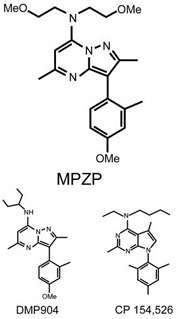 The “dark” side of addiction and anxiety. A long-standing example of our interest in this area concerns extrahypothalamic CRF/urocortin 1-CRF1 signaling and its role in the “dark” side of alcoholism, drug addiction, and anxiety disorders. In work performed in collaboration with George Koob (TSRI-La Jolla) and our colleagues in the Committee on the Neurobiology of Addictive Disorders, we found that previously known and novel small-molecule selective CRF1 receptor antagonists reduce anxiety-like behavior and blunt the excess drug self-administration that occurs in rodent models of alcohol, opiate, cocaine, and nicotine dependence. Biochemical and electrophysiologic studies have pointed to neuroadaptation of CRF1 systems in the extended amygdala systems as a result of chronic, intermittent drug exposure or traumatic stress history. Innate genetic differences in the CRF and urocortin 1 systems of anxious, alcohol-preferring rodent lines have been identified. We have interest in the ongoing medicinal chemistry development of non-peptide, drug-like CRF1 antagonists suitable for clinical use.
The “dark” side of addiction and anxiety. A long-standing example of our interest in this area concerns extrahypothalamic CRF/urocortin 1-CRF1 signaling and its role in the “dark” side of alcoholism, drug addiction, and anxiety disorders. In work performed in collaboration with George Koob (TSRI-La Jolla) and our colleagues in the Committee on the Neurobiology of Addictive Disorders, we found that previously known and novel small-molecule selective CRF1 receptor antagonists reduce anxiety-like behavior and blunt the excess drug self-administration that occurs in rodent models of alcohol, opiate, cocaine, and nicotine dependence. Biochemical and electrophysiologic studies have pointed to neuroadaptation of CRF1 systems in the extended amygdala systems as a result of chronic, intermittent drug exposure or traumatic stress history. Innate genetic differences in the CRF and urocortin 1 systems of anxious, alcohol-preferring rodent lines have been identified. We have interest in the ongoing medicinal chemistry development of non-peptide, drug-like CRF1 antagonists suitable for clinical use.
Novel targets for addiction and emotional disorders. Another area of interest has been in the role of sigma-1 receptors, molecular chaperones that are a component of the endoplasmic reticulum stress response, in excessive ethanol intake and the regulation of mood. We showed that sigma-1 receptor antagonists reduce ethanol intake in models of excessive drinking, whereas administration of a sigma agonist leads to binge intake of alcohol. We found that mice lacking sigma-1 receptors show a depressive-like phenotype, consistent with emerging evidence that sigma-1 receptor agonists have antidepressant properties. Having established the sigma-1 knockout mouse line for our own projects, we are collaborating with other labs interested in this system in other biological contexts. One project, led by our collaborator, Sylvia Smith (Medical College of Georgia), found that sigma receptors are key for preventing age-related retinal degeneration or diabetic retinopathy.
More recently, we have begun to explore the neuroadaptive role played by neuronal pentraxins and phosphodiesterases in the transition to ethanol use disorders and comorbid anxiety that can occur after traumatic stress or ethanol exposure. Finally, in collaboration with George Koob (TSRI-La Jolla) and Catherine Rivier (The Salk Institute), we have selectively bred rat lines for differential adrenocortical stress reactivity. These lines will be used both for functional genomic discovery of novel targets relevant to stress-related disorders and for evaluating candidate anti-stress therapeutics.
Support. The Zorrilla lab is grateful for past and present federal funding for our research and lab members from the National Institutes of Health and Department of Defense, including support from the National Institute of Diabetes and Digestive and Kidney Disorders, the National Institute on Drug Abuse, and the National Institute on Alcohol Abuse and Alcoholism. Private sources of support have included the Pearson Center for Alcoholism and Addiction Research, the Eotvos Hungarian Scholarship Board, and an unrestricted grant from McDonald’s.
|
Relevant grant numbers include:
DK076896, and |
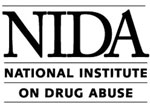     |
Publications. Please see our Publications page for direct links to our papers.

